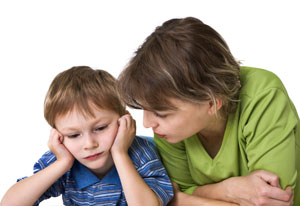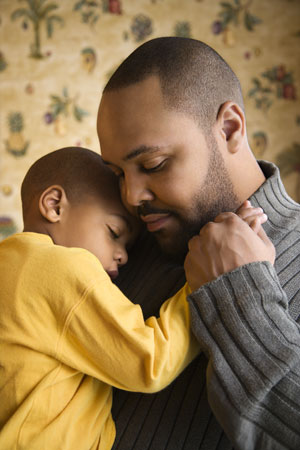The events in the aftermath of the Boston Marathon bombings on April 15th began to feel too familiar. A few posts about “something” on Facebook, a few minutes later the picture beginning to become clear. Knowing within such a short time that real horror had happened. Spending the rest of the day purposely shielding my six year old son from all available live media even while I scrolled frantically on my phone for updates, and to check in with loved ones who might be in harms way.
Everyone in our nation has had to grapple with unspeakable events in recent months and years. As parents and educators though, we must not only grapple for ourselves, but also navigate how to help our children. It is not an easy task.
 What They Need to Know
What They Need to Know
There are a few basic guidelines for talking with young children about trauma, be it on the national stage or something more close to home. First of all, don’t offer the children more information than they need to hear. But also consider what they may overhear, and what information you want to come from you first. Little ears hear big things – from the adults around them, from television in the background (even if you don’t think they are paying attention), from classmates, kids in the neighborhood, or other adults who are not as careful and considerate with their words as you want to be.
What They are Ready to Know
Take into account where your child is developmentally. Scott Noyes, a seasoned educator and speaker on challenging issues in child development from Empowering Programs, notes in an interview (2013) that, “The younger the child, the more egocentric they are. My safety. My family. My friends. Are they safe? Young children feel that things are about them. These children need concrete ideas to work with.” Do not feel worried if they don’t give a thought to the victims just yet. They often aren’t ready to extrapolate out like that. Older children will begin to make those connections and ask about those involved.
What Not to Tell Them
No matter how you choose to address trauma with your child, one of the most important things you can do is to avoid exposing them to media coverage of the event. News outlets tend to play clips of something on a repeated loop. To a young child, this looks like the event is happening over and over again. They cannot grasp that it is in the past or perhaps far away. Images and words put out there by mass media are not intended for young children and do not take their delicate needs and ability to comprehend into account.
Noyes says the one phrase to avoid is “There is nothing to be afraid of.” Whatever has happened is real and it is frightening. Offer acceptance and an open door to communication, with phrases like, “It can be pretty frightening to see things like that. When something is frightening, be sure to come and talk to me.” Repeat the message often to come and talk to you.
What to Tell Them
If you can, try to anticipate what your child will be exposed to and meet them at that place. You may ask leading questions to find out what they’ve heard, or you may address topics in an age-appropriate fashion. Stick with the basics, offer answers to their questions honestly but avoid gory detail, and most of all, assure them they are safe in the moment. For instance, I knew my son would hear about Sandy Hook at school. So we told him, “There was a bad man who came to a school and hurt some children. He cannot hurt you. You are safe and we love you very much. If you hear anything or feel worried at all we want you to come talk to us.”
More questions did come from him in time, as is common. You must be on the lookout for opportunities to listen and as you respond, Noyes notes, “Keep answers brief. Provide many opportunities for children to revisit the discussion. Generally complex issues are not understood in one sitting.”
Try to keep a positive spin on your conversations, even as you help your child work through fears. For instance, it can be a good idea to point out to your child the heroes in the story – the first responders, medical personnel, and witnesses who all jump in to help.
 Mr. Rogers has a quote often circulated in recent months that offers very concrete and helpful advice. He says, “When I was a boy and I would see scary things in the news, my mother would say to me, ‘Look for the helpers. You will always find people who are helping.’ To this day, especially in times of ‘disaster,’ I remember my mother’s words, and I am always comforted by realizing that there are still so many helpers – so many caring people in this world.”
Mr. Rogers has a quote often circulated in recent months that offers very concrete and helpful advice. He says, “When I was a boy and I would see scary things in the news, my mother would say to me, ‘Look for the helpers. You will always find people who are helping.’ To this day, especially in times of ‘disaster,’ I remember my mother’s words, and I am always comforted by realizing that there are still so many helpers – so many caring people in this world.”
Wise words for hard times. We join you in hugging our kids a little tighter and sending love and light to those affected by recent tragedy.
~The Two Little Hands Team
SOURCES
Noyes, S. (2013, April 16). E-mail interview.
